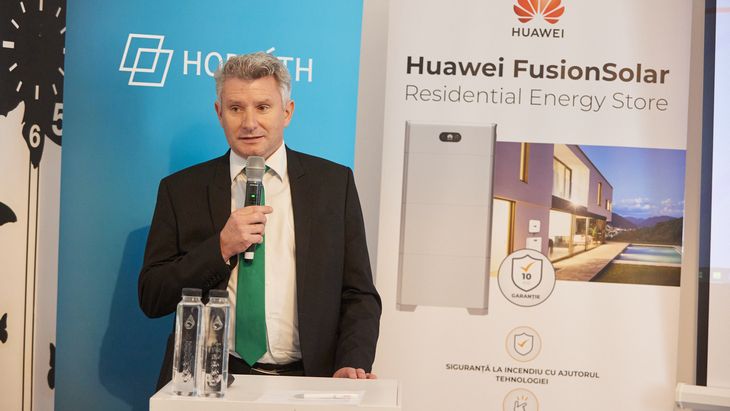Natural gas distribution networks can be adapted to use a mixture of methane and hydrogen, as is already happening in Germany, for example. The Delgaz Grid company will start, at the beginning of May, a pilot project through which it will test the resistance of the networks and the interest of customers in Mediaș for this energy source.
“We are ready to convert a large part of our networks to hydrogen, but because we are among the few states in the EU that have gas, we have to push to use this gas mixed with hydrogen. (…) The calorific value of hydrogen is a third of that of methane gas, and hydrogen is currently expensive because it is linked to the price of energy, but in the future it will reach a similar level to gas, as they gas reserves will run out,” said Cristian Călin, Gas Technical Manager, Delgaz Grid, at the conference “Hydrogen Project – what we have in Romania”, organized by Energynomics.
In the pilot project, which will take place in Mediaș, the company will use a mixture of 23% hydrogen in the methane gas supplied to customers. One objective of the test is to check the resistance of household appliances to this mixture of hydrogen and methane, as well as the gas pipes’ behavior. Delgaz Grid operates a network of gas pipelines with a length of over 25,000 kilometers, and gas networks in Romania annually transport twice as much energy as the electricity infrastructure, namely 130 TWh compared to 56 TWh. “It’s a tremendous opportunity to convert them to hydrogen,” he said.
On the other hand, at the national level, a sudden move to the use of green hydrogen is not indicated, but a temporary use of hydrogen with a lower carbon footprint, because this is the “normal and reasonable solution”, also because the transport infrastructure of hydrogen from where it is produced to consumers is currently extremely expensive. This impediment can be solved by using the existing natural gas infrastructure, which will play a key role in future hydrogen transport from both a volume and price perspective.
In any case, the transition to the use of hydrogen on a national scale will need financing programs including for the adaptation of the production of materials and equipment related to the transport and distribution infrastructure through methane gas pipelines.
According to Călin, if coal and wood are phased-out, in the next 50 years there is no optimal solution for heating, except for the mixture of gas with hydrogen, and later, as the gas reserves will be exhausted, exclusively hydrogen. On the other hand, hydrogen will have a very important role in mobility, especially in the freight sector, but not necessarily based on hydrogen fuel cell vehicles, which have low efficiency, but using hydrogen combustion engines.
“Electricity grids were not designed to provide heating needs, nor to support industry in its entirety. It would be an effort hard to imagine in terms of investment and time to get to the point where everything will be electric. We are talking about the two trends at the European level, the one where everything is electric and the one where we have hybrid uses. From a personal point of view, I’m not a follower of radical approaches, so I don’t believe in the all-electric version. I believe in the hybrid version, because the one in which everything is electric is something hard to imagine”, said Călin.
The conference “Hydrogen Project – what we have in Romania” was organized by Energynomics with the support of our partners Aplind, Delgaz Grid, Horváth, Photomate and Transgaz.
